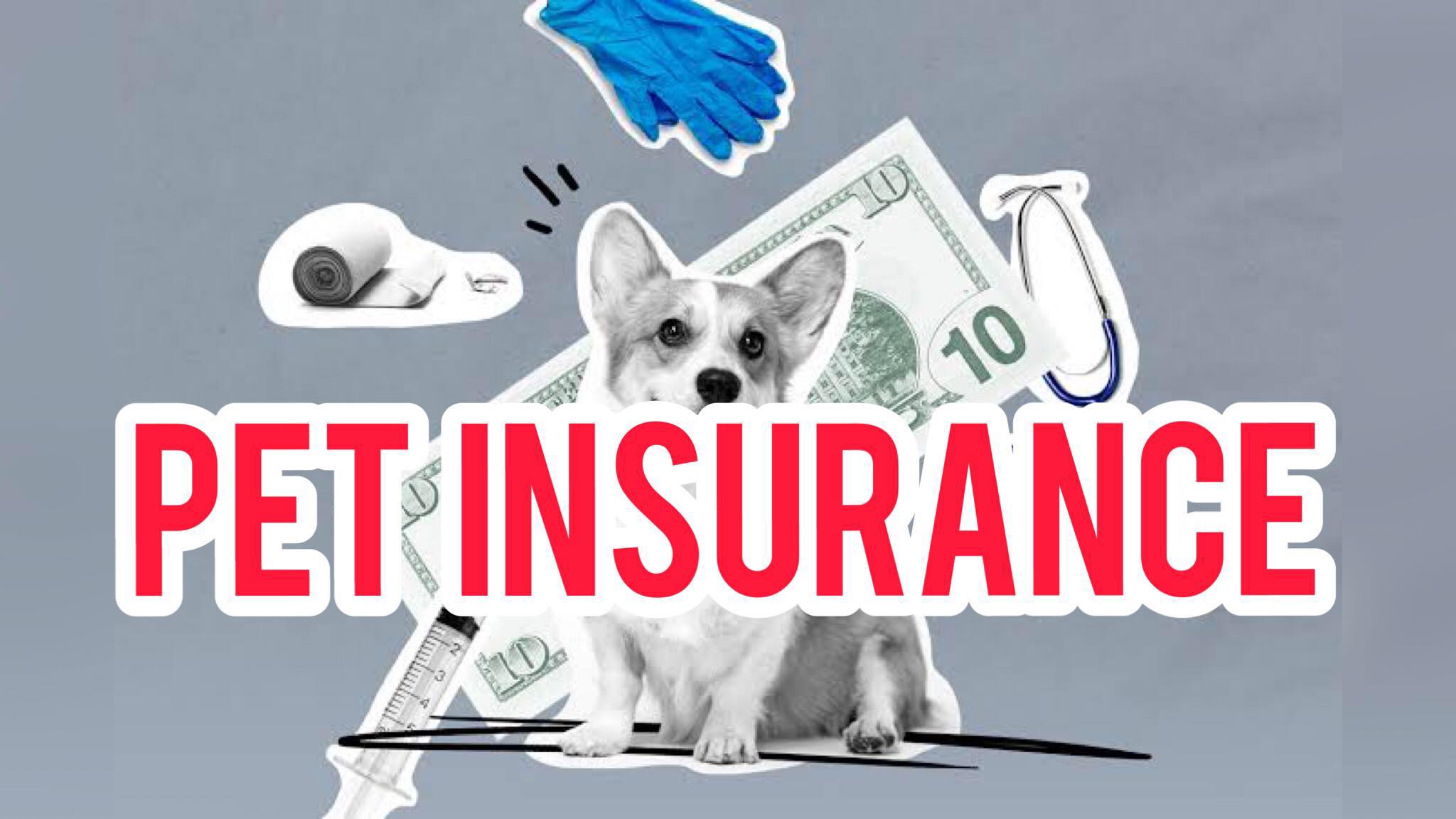Pet Insurance functions more like a property insurance than health insurance. Pet insurance is a type of insurance that pet owners can get to assist offset the total expense of high medical bills. This coverage is comparable to human health insurance plans. The sometimes expensive veterinarian procedures will be partially or totally covered by pet insurance. Finding the best pet insurance plan for you requires evaluating and comparing different options.
There is typically a deductible, which is an upfront cost before the coverage kicks in, just like with human health insurance. Most companies base the cost of the insurance premium on what veterinarian treatment typically costs in the owner’s area. Moreover, not all veterinarian operations could be covered by the coverage.
The American Pet Products Association (APPA) National Pet Owners Survey during 2021–2022 found that 70% of American households—or just under 90.5 million households—own a pet. These families spent $123.6 billion overall in 2021 and $103.6 billion in 2020, increasing their expenditure yearly starting in 2018. The second-largest expenditure category for pet owners in 2021 was veterinary care, which accounted for $34.3 billion, or over 30% of total expenditures.
The price of veterinarian care is growing, and Americans are aware of this. In the United States, pet insurance policies insured more than 4.41 million animals in 2021, at a total cost of $2.6 billion. It’s a young market; pet insurance didn’t become a recognized choice until 1982, when the well-known dog Lassie acquired her first pet insurance policy.
The North American Pet Health Insurance Association (NAPHIA) nevertheless reports that “since 2017, the average annual growth rate of insured pets is 21.5%.” What your pet’s conditions is like and the sort of coverage you want will have a significant impact on your search for the best pet insurance. Only 25 firms offer pet insurance in North America as of 2022, and 99% of them are NAPIA members, despite the industry’s rising popularity. What you should know is as follows.
Several Benefits Of Pet Insurance
While you treat your pet as though they were a member of the family, the insurance sector views Fido or Fluffy (your pet) more as property. Pet insurance works more like property insurance than health insurance because of this. Be aware that this status benefits you before you remind someone that your pet isn’t a piece of property. Compared to health insurance plans intended for people, understanding and reading the policy is a piece of cake. Think about these benefits:
Choice of Vet: Pet insurance won’t impose restrictions on who you can and cannot see as long as the veterinarian is licensed. There aren’t any out-of-network medical professionals like the ones that your own health insurance plan presumably forbids.
Simple Policies: The majority of businesses just provide three tiers. There are three types of coverage: accident-only (basic); accident and sickness (comprehensive); and wellness coverage, which is restricted to preventative measures and excludes emergencies.
Affordable Premiums: The cost of insurance varies according on the policy and coverage, however, on average, wellness coverage costs $10 per month, accident-only coverage costs $11 for cats and $20 for dogs, and accident and sickness coverage costs $29 for cats and $49 for dogs per month. Of course, a number of factors affect the price, including as the breed and age of the animal, your location, and the policy choices you select.
You can understand a pet insurance coverage if you are familiar with insurance terms. You must pay a deductible (a predetermined sum before the insurance begins) and maybe a co-pay in addition to a monthly or yearly premium. Deductibles can be anything from $50 and $250, although high-deductible plans are also an option to reduce premium costs. Co-pays range from 10% to 30% of the total bill.
There is one significant distinction between different human healthcare policies. You must pay the bill upfront, not the insurance provider. In other words, “Payment is due at the time of service,” as the sign at some medical offices reads. Following payment, you submit a claim to your pet insurance company and await payment.
You might be able to wait to make a payment to your veterinarian until the insurance company settles its part. Make sure you understand the payment process, nevertheless, before consenting to that pricey operation.
Also Read: Auto Insurance: Best Review In 2023
How Much Does Veterinary Care Cost On Average?
Pet owners frequently view their animals in the same manner that they view their children. Owners may now request several operations for their animals that were formerly reserved for humans because to advancements in veterinary science. These treatments could be pricey. According to a Betterpet post from June 2022, an overnight stay runs between $1,000 and $2,000 and an emergency exam costs between $100 and $200.
Annual examinations, vaccinations, blood tests, and dental cleanings are all part of basic pet care. However, specialist pet care fields like oncology and neurology are growing rapidly. Like their human owners, dogs may have medical emergencies. The ASPCA estimates that the cost of normal medical care (vaccinations, checkups, etc.) will be between $160 and $220 per year in 2021.
The likelihood of significant medical costs might discourage some prospective pet owners from getting a pet. In addition, for those who do adopt, the prospect of pricey treatments and medications may influence a choice to euthanize a pet, a practice known as “economic euthanasia.”
What Is The Cost Of Pet Insurance?
A pet owner can get an insurance that will reduce some out-of-pocket payments in order to assist with annual bills and unplanned crises. A pet owner will pay an annual or monthly payment, just like with health insurance for people. Several elements that affect the price of pet insurance include:
Species: Due to their size and the fact that more claims are made for them, dogs often cost more than cats.
Breed: Some breeds are more prone to specific diseases and wounds.
Gender: Females often cost less since statistically speaking, more claims are made for men than for females.
Age: Due to the effects of aging, insurance for older pets is more expensive.
Location: Compared to suburbs and rural regions, big urban centers charge higher premiums for insurance.
The North American Pet Health Insurance Association (NAPHIA) reported in its 2022 State of the Industry Report that the average annual premium for pet insurance (accident and sickness) in the U.S. in 2021 was $584 for dogs and $343 for cats. For dogs, the gross written premium (in-force) was $2.3 billion, while for cats, it was $300 million.
The typical co-pay, according to NAPHIA, is 80% of the amount you claim, while other businesses promote offering 90% or 100% coverage for various operations. The cost of insurance may be greater than the cost of services for young pets who often only require annual checks. The price of veterinarian care, however, can be more expensive than the insurance deductible in an emergency. Additionally, the coverage might reduce costs, regardless of whether there is an emergency, as elderly pets typically require more operations.
What to Look Out For In Pet Insurance
First off, even though they are required to tell you, if your pet has any previous problems, your coverage could not cover them. The National Association of Insurance Commissioners enacted the Pet Insurance Model Act in August 2022 to establish legal requirements for the expanding pet insurance market. One of the primary points relates to preexisting conditions, noting that the insurer bears the burden of evidence for such problems and that there are restrictions on how insurers may reject such claims.
Furthermore, no condition covered by the insurance may be deemed a prior condition at the time of policy renewal. However, it should be noted that NAIC lacks legislative authority and is instead a regulatory assistance group led by top insurance regulators from all 50 states, the District of Columbia, and five U.S. territories.
The waiting period follows. When you find out your pet needs an expensive operation, you cannot get pet insurance. The technique is known to insurers. States may differ, but waiting periods generally cannot be more than 30 days, and waiting periods for accidents are not permitted. Before a consumer buys an insurance, the insurers must make their waiting period policy clear. Additionally, there can be no requirements for current policy renewals, like waiting periods or veterinarian examinations.
Inquire about payout maximums. Maximums for incidents, years, or the duration of the policy may be among them. The greatest rewards are often found in the highest-level plans. The majority of insurance will also raise your premium to reflect escalating expenditures as well as your pet’s age and condition. Nevertheless, some businesses don’t. Before committing to the policy, enquire about rate hikes.
Also Read: Best Homeowners Insurance Review 2023
What Does Pet Insurance Not Cover?
Exclusions differ from company to company. They are often enumerated in a sample policy that may be found on a company’s website. Pre-existing conditions, the big one, is the main justification for most claims being rejected. Owners of pets should enquire as to whether a pet insurance provider would examine the medical history of their animal and notify them in advance if any conditions are deemed pre-existing and will not be covered.
Sadly, not all businesses perform this automatically. So, before choosing a firm to insurance your pet, be sure to inquire for reviews. On the aspect of unusual pet (exotic pet), your options for insurance companies may be limited to one or perhaps just two if you possess an unusual pet. The majority of pet insurance plans cover dogs and cats. Check out Nationwide pet insurance if you have a bird, iguana, or any other sort of pet. Nationwide is perhaps the biggest and most well-known supplier of exotic pet insurance.
Conclusion
Insurance is worthwhile when something truly terrible occurs, even if you have to pay years of payments. You’re generally better off placing the monthly premium into a cat or doggie emergency fund to cover such unforeseen expenses for routine or relatively small issues. Get the largest deductible you can manage if you decide to buy pet insurance for catastrophic care.

Sage is a financial/consumer journalist and senior editor, personal finance, of TrendsHQ. EXPERTISE: Personal Finance, Careers, Jobs, Scholarships, and Entertainment.
